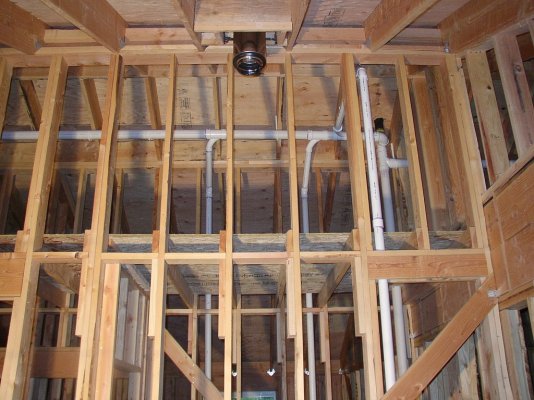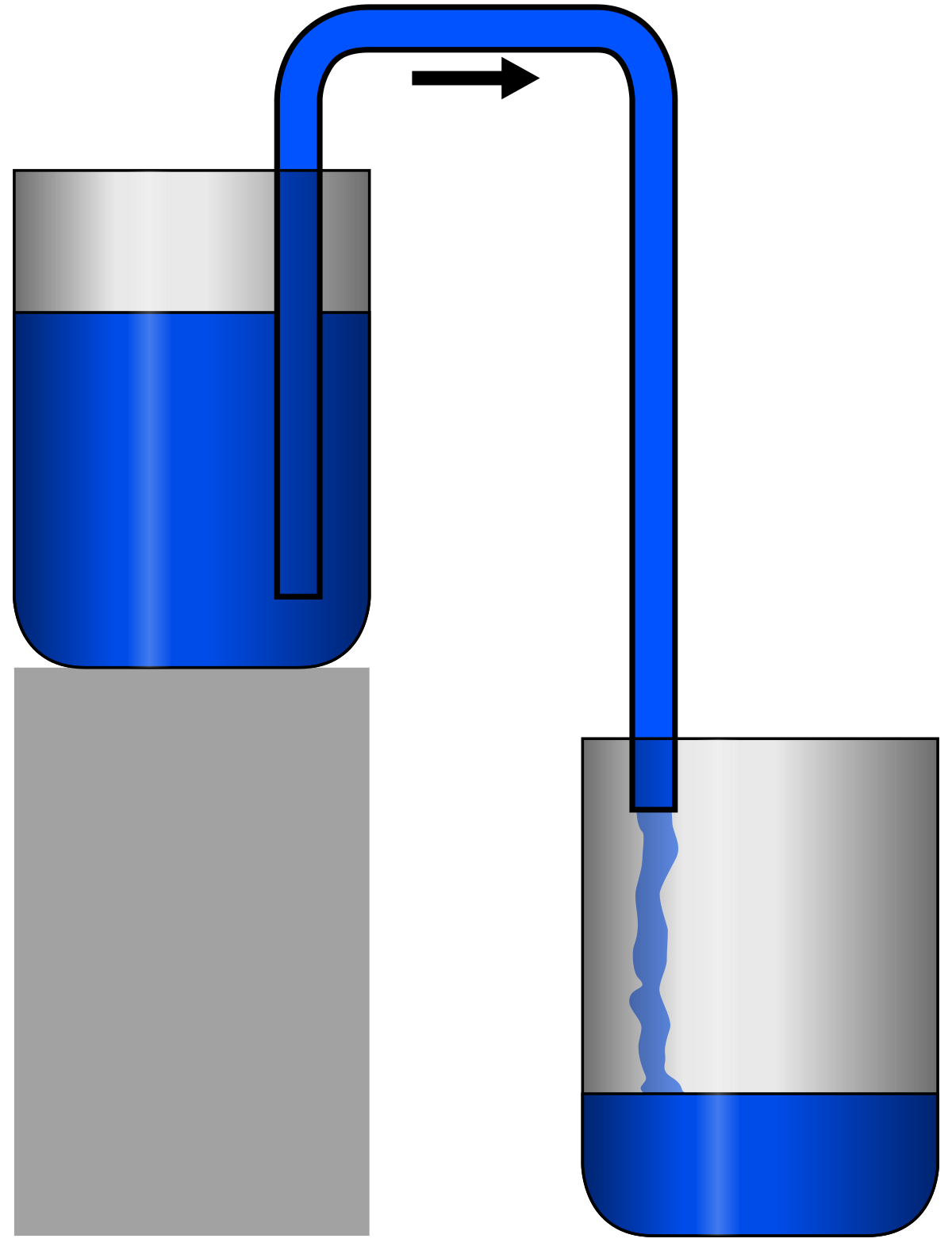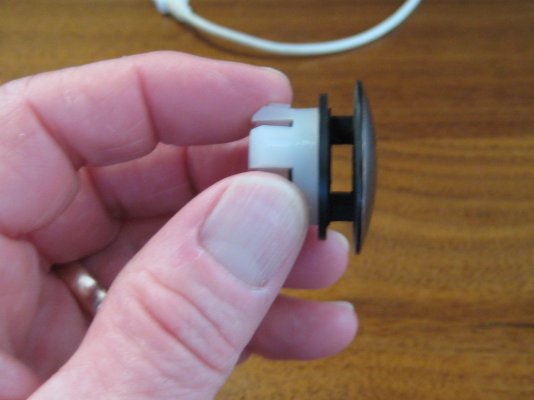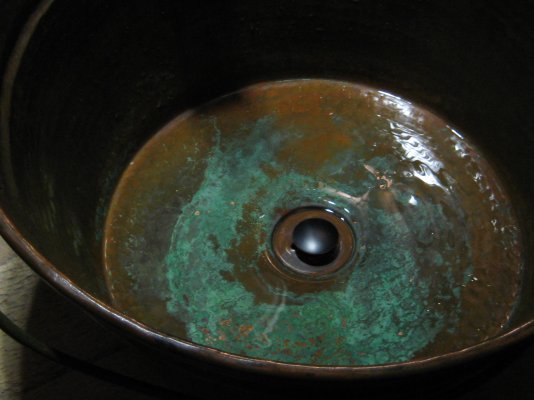....Again, the vent stack is to prevent the "slug" of water coming out of one fixture from sucking water out of other traps. Nothing else. -ERD50
If one removes the vent pipe from the top picture, so the drain pipe is continuous from sink to down out of the picture, then the difference between the top pic, and the bottom pic, is slight. With that modification to the top pic, it becomes a self-starting siphon when the volume of water descending the pipe, fills the pipe.
A simple experiment to show this, that anyone can try: A length of clear flexible vinyl tubing; a funnel whose neck fits tightly into the tubing; a bucket; a sink with running water

Instead of going to bed after reading this thread last night like I should have, I hunted up the tubing and found a funnel that fit well. The setup: Funnel is held under a faucet, with the tubing going down into the sink a ways, then it travels up and over the sinktop edge, then down to a bucket. I lightly pinched the tubing with my knee against the cabinet (only enough to hold it in place, not enough to deform the tubing, which was pretty heavy-wall anyway). I adjusted the tubing so it made a "trap" down below the funnel, I on purpose did NOT make a long deep trap, as I wanted to approximate a real-world P-Trap. My knee pressure held the length of tubing, so the P-Trap depth stayed constant.
I started slowly filling the funnel with water, filling at an edge, as I wanted any air put in the water by the faucet's aerator to not go straight down the neck of the funnel. Looking at the tubing, could see small slugs of water interspersed with air slugs. If I turned OFF the faucet, no syphon action occurred, as the stream of water in the tubing was not filling 100% of the tubing's volume.
I turned the water back ON, filling it faster. The slugs of air disappeared, the tubing's volume was now all water. I then turned the faucet OFF. The water was zooming down the tubing, and then the funnel made sucking sounds for a moment. The siphon effect had sucked the water out of the tubing, and out of the "trap". There were still water droplets and a film of water in the "trap". In a moment or two, the water bits, due to gravity, collected in the bottom of the "trap". It was just a small bit of water that collected, about 1" long in the tubing's "trap". Very little water, as compared to what the "trap" could hold. So in the real world, that small amount of residual water left in the "trap" could evaporate, allowing sewer gases to rise from sewer into house.
Thusly, the vent line in the top picture is important to the trap in the pic.
It's an easy experiment to implement






